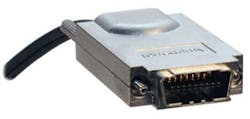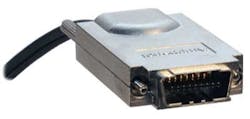BIOMEDICAL RESEARCH: High-speed, high-resolution images captured simultaneously
When measuring biological processes such as functional imaging of cardiac and neuronal cell networks, fluorescent probes are used to delineate transient ion concentration and membrane voltage changes. To properly image these fluorescent processes, researchers typically rely on high-speed, high-dynamic-range sensors of low resolution as well as high-spatial-resolution cameras to monitor the structure and function of these cells.
Realizing the benefits that a combined approach to this problem would bring, Gil Bub, with Peter Kohl and other researchers at the University of Oxford (Oxford, UK; www.ox.ac.uk), have developed a method known as temporal pixel multiplexing (TPM) that allows high-speed and high-resolution images to be captured simultaneously.
The method developed, funded by the UK Biotechnology and Biological Sciences Research Council (Swindon, UK; www.bbsrc.ac.uk), the British Heart Foundation (London, UK; www.bhf.org.uk), and Isis Innovation (Oxford, UK; www.isis-innovation.com), uses off-the-shelf CCD cameras and digital light projectors (DLPs) to achieve this goal (see “Nature Methods”).
“Area-array CCD- and CMOS-based cameras consist of an array of pixels that integrate charge when photons strike their surface,” says Bub. “After a specific programmed integration time, the charge on all the pixels in a frame is digitized with each pixel being exposed for a set duration” (see figure).
“In a pixel multiplexing camera, different pixels are exposed at different times during this integration time. Since all the pixels are eventually exposed during this integration time, a high-resolution image is still obtained while at the same time a series of images with lower spatial resolution is also captured. Thus, each full-resolution image captured by the camera, and contains both the full scene plus a high-speed, low-resolution image sequence,” he says.
To accomplish this, Bub and his colleagues have developed a prototype TPM system that uses a 1360 × 1024-pixel GC1380H CCD camera from Allied Vision Technologies Canada (Stadtroda, Germany; www.alliedvisiontec.com) focused onto a DLP kit from Vialux (Chemnitz, Germany; www.vialux.de), which incorporates a DLP from Texas Instruments (Dallas, TX, USA; www.ti.com).
Images either from a fluorescence microscope or from a second lens used for macro-imaging are then focused on the DLP. By synchronized toggling of the mirrors with the camera’s normal exposure, high-speed information is then captured within high-resolution images.
To demonstrate the effectiveness of this technique, Bub captured an image sequence of a drop of opaque liquid (milk) falling into a beaker filled with water. As the megapixel camera was running at 25 frames/s, the DLP cycled through a sequence of 16 mirror patterns during each full-frame acquisition. Thus, while the frame period was 40 ms, sub-images were captured at 2.5 ms, yielding a final frame rate of the embedded lower-resolution image sequence of 400 frames/s. After extracting and combining simultaneously exposed pixels, the blurred regions in the high-resolution, low-speed image were resolved as an image sequence.
Bub has also demonstrated the effectiveness of the technique in studying the muscle cells of rats. After introducing a fluorescent dye into the cells and imaging them with a microscope, high-resolution cell structure images were captured while at the same time whole-cell calcium transients could be measured at 250 frames/s, more than an order of magnitude greater than the 10-frame/s rate of the camera.
Not only does the system provide simultaneous high-resolution and high-speed data sets using just one detector, but data throughput requirements are the same as those of a single high-resolution image sequence. This allows slow-scan cameras with their known advantages in terms of cost, signal-to-noise ratio, and dynamic range to be used for high-speed imaging tasks.
According to Bub, the prototype system may soon move from the optical bench to commercially available camera systems. At the University of Nottingham (Nottingham, UK; www.nottingham.ac.uk), for example, Mark Pitter is planning to incorporate the technology into a single CMOS chip that can be used in a compact camera system. What Pitter hopes to design is a CMOS sensor that can control when individual pixels integrate light, eliminating the use of a DLP.
When an image is captured with a standard CCD camera, each pixel is exposed at the same time for a set duration (ti). Pixel multiplexing exposes different pixels at different times during ti. Since all the pixels are eventually exposed during ti, a high-resolution image is captured simultaneously with a series of images with lower spatial resolution.

